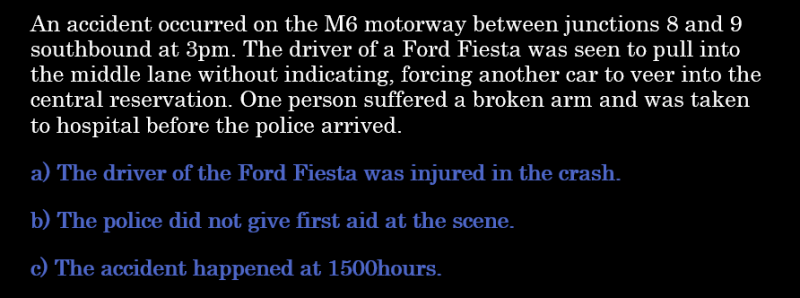Are you thinking about a career as a police officer?
Do you know the process of how to get into this career?
Aspiring police officers face a gruelling time when applying to join the police force. Not only do they have to submit an application form, but there are a whole host of assessments for you to undertake, and pass, in order to become a police officer.
A challenging times lies ahead for anyone who is thinking about undergoing the police officer selection process. However, with time and effort, you will be able to increase your chances of being successful in the application process.

POLICE INITIAL RECRUITMENT TESTS (PIRT)
As I mentioned before, aspiring police officers will have to undertake many tests and assessments. This is more commonly known as the ‘Police Initial Recruitment Tests (PIRT)’.
The PIRT is an exam which consists of a numerical and verbal reasoning assessment. Both tests are multiple choice, and both tests will have to be passed if you wish to move on to the next stage of the police officer selection process.
For this blog, I am going to focus on how to pass the police verbal reasoning test.
However, for a more general overview of police officer tests, please click on the link to be directed to our in-depth page on police officer tests.
POLICE VERBAL REASONING TEST
Okay, so what is the police verbal reasoning test all about?
Well, the police verbal reasoning test will, of course, assess your verbal reasoning skills and how well you are able to read, understand and analyse information.
You will be given a passage. Within this passage, you will be given a scenario. From this, you will be given statements about that passage, and you will have to work out whether each statement is TRUE, FALSE or IMPOSSIBLE TO SAY.
The key thing to remember:
When reading the passage, when it comes to working out whether the statement is true, false or impossible to say, it is important that, and I cannot stress this enough, you ONLY focus on the information provided in the passage.
Even if you know something to be incorrect, or you don’t agree with what is being said… it is important that you only stick to the information provided to you in the passage.
Let’s take a look at an example:
Statement A
• Impossible to say. The passage does not state who was injured in the crash, only that ‘one person suffered a broken arm’. You cannot confirm that this was the driver of the Ford Fiesta.
Statement B
• True. The passage clearly states that the person injured in the crash had already been taken to hospital, before the police even arrived.
Statement C
• True. The passage states that the accident occurred at ‘3pm’. In military time, this is 1500 hours, which makes this statement correct.
POLICE VERBAL REASONING PRACTICE QUESTIONS
Below I have provided you with 3 passages. Read each passage, and the statements that follow, and determine whether each statement is true, false or impossible to say.
QUESTION 1

TRUE, FALSE OR IMPOSSIBLE TO SAY?
QUESTION 2

TRUE, FALSE OR IMPOSSIBLE TO SAY?
QUESTION 3

TRUE, FALSE OR IMPOSSIBLE TO SAY?
ANSWERS – POLICE VERBAL REASONING TEST
QUESTION 1
a) Impossible to say. It is not clear whether anyone saw anything. You cannot make this generalisation based on the information provided.
b) True. The passage clearly states that the gunmen were seen driving off in a black van.
c) True. Again, the passage states that the incident was picked up by CCTV.
QUESTION 2
a) True. The passage states that the fire was arson, meaning is was started deliberately.
b) Impossible to say. The passage does not actually state that the person seen running away was the culprit. Therefore, you cannot come to this conclusion.
c) True. This fire is said to be one of two fires that has occurred at the factory.
QUESTION 3
a) Impossible to say. The passage only sates that the man is between ’30 and 35’. It does not state his actual age, therefore you cannot conclude this.
b) False. A hammer was used to smash the rear window, not the windscreen.
c) Impossible to say. Just because the car was outside of Mrs Brown’s house, does not mean that the car is hers. Therefore you cannot conclude this based on the information.